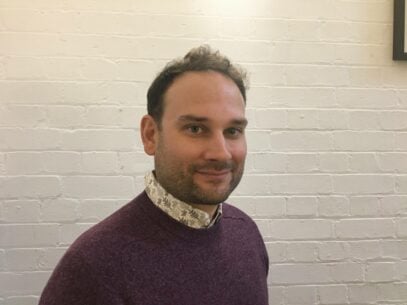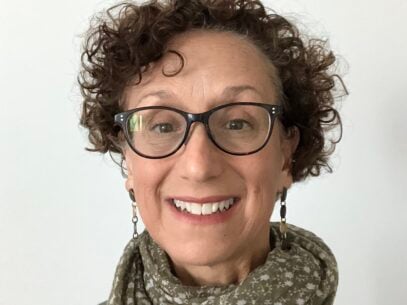20 December 2024
By Ellie Haworth, Head of Children’s Services Transformation and Improvement, SCIE
I don’t know whether you have been following the French trial where justice is being sought for Gisele Pelicot. I find this a particularly harrowing case and I have been following it almost reluctantly. As of yesterday, 19 December, a verdict has been passed and sentences have been meted out.
I do not intend to go into the details of the case, because I do not want to distress anyone and I have no personal information about this case except for what has been reported in the mainstream media.
I am also not making any specific recommendations as to how the French authorities should be responding, because I recognise that their safeguarding and criminal systems are different from ours and that I have no expertise on the French systems.
However, I have been reflecting on why this case matters to us as safeguarding professionals. And I wanted to share my reflections, and see whether what I was thinking and feeling corresponded to other people’s reactions across social care.

Firstly, I was struck that this was an adult who was abused and yet, who on the face of it did not have any vulnerabilities that would have prompted involvement from formal services. A lack of vulnerability does not, in this instance, protect you from harm.
This reflection is self-evident if you consider the assaults on Mme Pelicot through the lens of crime. In this country, we are able to use multiple lenses and consider these types of abuse as crimes but also as safeguarding difficulties.
In adults’ safeguarding, I suspect that no authorities would have been aware of Mme Pelicot had this situation arisen in the UK. In children’s safeguarding, there is a greater sense that we should be aware of people at harm, but again, in a case like this, should this have been a child, with all the positives apparent and all the harm secret, would there have been any opportunity for services to be made aware?
This raises the critical question, how do we safeguard those people we don’t know about?
Many organisations feel overwhelmed by the responsibilities of safeguarding, feeling like it is an impossibly high bar for them to uphold and that the consequences of not living up to it are serious.
I think this French trial speaks to these fears, the worst imaginable crimes have taken place and we were collectively powerless to prevent it.
SCIE works with organisations to audit and review their safeguarding activities, policies and processes. We also support organisations by offering training. All of our safeguarding support is delivered by professionals with extensive experience of safeguarding in a multitude of settings, local authorities, charities, faith organisations, health locations and education settings. We bring this professional experience and learning from the national evidence to help organisations to find their own way to uphold the highest standards of safeguarding.
To consider the counterfactual, if this had taken place in England it would require a multi-agency response and would meet the high risk threshold for MARAC (Multi-agency risk assessment conference). This emphasises the importance of a multi-agency response to serious incidents.
No society is immune to evil acts, but we can strengthen as many systems as we can to make them unlikely. We can reduce the odds by ensuring that all of our services have the most robust safeguarding processes in place. We can audit and review regularly to ensure that our systems remain fit for purpose. And we can train all practitioners in safeguarding to maximise the number of eyes, minds and hearts who are skilful in spotting abuse. We can also make sure that we report all of our concerns and ensure that the responsible agencies act upon these concerns.
Recognising coercive control
A second reflection on this case is that domestic abuse comes in many different guises. Domestic abuse is often a crime and also a safeguarding matter. It is, as in this case, also something that happens in privacy, behind closed doors and within the home.
The terminology coercive control is used to describe these types of situations, where a person has their rights, health and wellbeing undermined. This is a type of harm and abuse that remains difficult for professionals to recognise and in the UK has only been a criminal offence since 2015. Recognition of this type of harm is essential for us to respond to the safeguarding matter, to prosecute the crimes and to restore safety for the individuals. Recognition is at the heart of safeguarding activity.
Domestic violence is incredibly risky for individuals because of this secret nature of the abuse. It relies on several features to become apparent. It relies on the courage of the person to report it and if this happens they need receptive services to offer support. It relies upon the observation skills of friends, families and other members of the community to raise the topic with the individual and to offer help. It also relies upon all those community services to put the information together and to realise the risks and harms.
Again, this can seem like a responsibility and a burden for the organisations. However, in SCIE’s training, we offer advice around the tricky subject of domestic abuse, including how to be trauma-informed in response to it, who to talk to and how to report it, and most importantly how to recognise the signs. Our training aims to give all of us who work in related services the practical skills needed to intervene and reduce this harm.
Addressing digital and cyber harms
As a final reflection, in this case there has been an online, cyber and digital element. The abuses of Mme Pelicot were, it is my understanding, made possible by the digital technology we now have available to us.
I am not intending to get into the debate as to whether technology is a good or bad thing for society. However, it is important that we continue to evolve our safeguarding law, regulations, systems, processes and practice to reflect the changing demands and pressures that the evolving technological landscape presents.
So, here at SCIE we propose three things:
- Governments to continue to ensure that they are using their power to reduce the opportunities for abuse with legislation, regulation, practice guidance and high quality information
- digital organisations to work with national and local governments to reduce the opportunities that the emerging technologies provide for abusive content
- use of training to ensure that online, digital and cyber harms are understood and acted upon by all who use providing services.
In conclusion, I hope you will join me in grieving this case in France, in sympathising for Mme Pelicot and her family and in continuing to find ways that we can constructively respond to these horrific circumstances and take all the steps necessary to ensure that they cannot be repeated.



